52+ Content Marketing Samples
Found below is a collection of plans, strategies, and other references for your content marketing needs.
-

100 Content Marketing Examples eBook
Get inspired by the different content marketing models presented in this sample.
-

A Tactical Approach to Content Marketing
Watch your search traffic skyrocket with the help of good content marketing.
-

B2B Content Marketing Report
Gain valuable insights on B2B content marketing through this report.
-

Benefits of Content Marketing
See how content marketing can benefit your business with this sample.
-

Content Marketing 101
Learn the basics of content marketing by referring to the sample provided.
-

Content Marketing Analysis & Recommendations
Create better marketing strategies for future campaigns with the help of this sample.
-

Content Marketing Creatives
Seek inspiration for your content marketing plans using these creative samples.
-

Content Marketing Development
Develop content with a specific goal in mind by referring to the sample given.
-
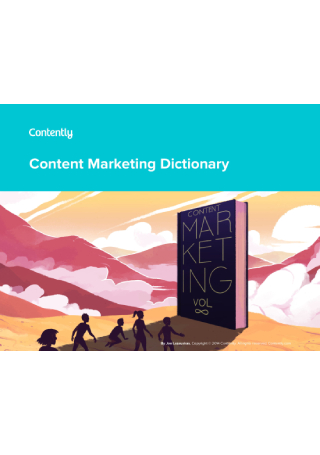
Content Marketing Dictionary
Use this dictionary to get to know the common terms used in content marketing.
-

Content Marketing for Beginners
Take a look at how content marketing can work for beginners through this sample.
-

Content Marketing for Dummies
Study the fundamentals of content marketing with the help of this sample.
-
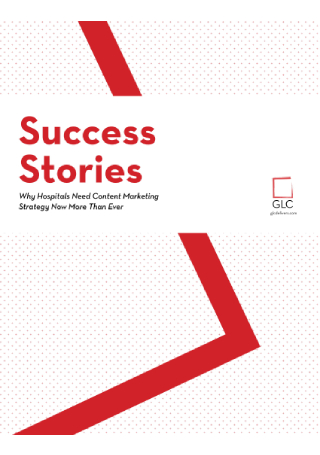
Content Marketing for Hospitals
Find out how content marketing can benefit the healthcare industry through this sample.
-

Content Marketing Guide for Startups
Launch a successful start-up business with the help of good content marketing.
-

Content Marketing Handbook
Innovate your content marketing approach with the help of this handbook.
-

Content Marketing in Asia Pacific
Learn about the effective use of content marketing in Asia Pacific through this sample.
-
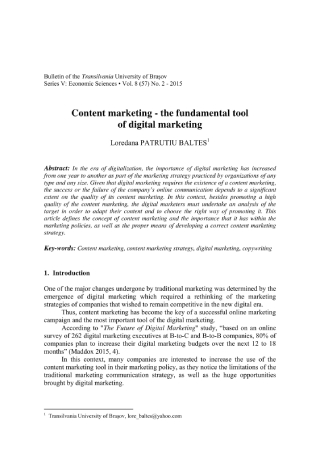
Content Marketing in Digital Marketing
Get to know content marketing as a fundamental tool in digital marketing.
-

Content Marketing Measurement Guide
Determine the marketing effectiveness of your content using this measurement guide.
-

Content Marketing Plan
Strategize on the perfect content marketing plan with the help of the given sample.
-
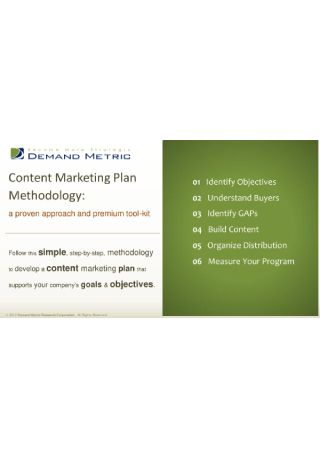
Content Marketing Plan Methodology
Develop a content marketing program to help plan, manage, and measure strategies.
-
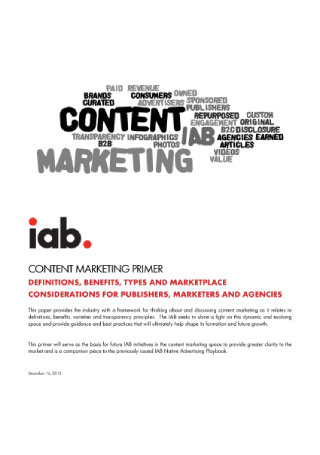
Content Marketing Primer
Better understand the world of content marketing with this sample.
-
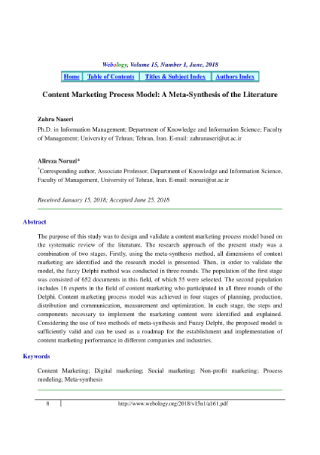
Content Marketing Process Model
Design a content marketing process model for your business using the sample provided.
-
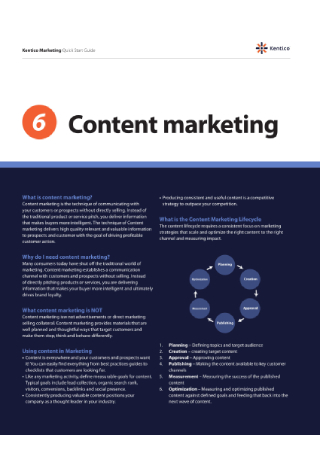
Content Marketing Quick Start Guide
Get a quick overview of content marketing with the help of this guide.
-
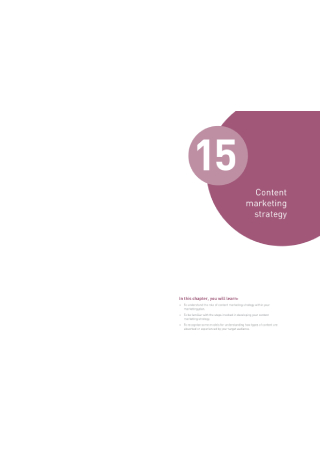
Content Marketing Strategy
Build a profitable business by creating an ideal content marketing strategy.
-

Content Marketing Strategy Checklist
Sharpen your content marketing strategy with the use of this checklist.
-
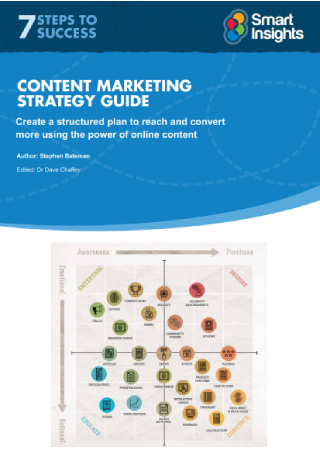
Content Marketing Strategy Guide
Download this sample to see how you can create a content marketing strategy that works.
-

Content Marketing Workshop Workbook
Grow your content marketing capabilities with the use of this workbook.
-
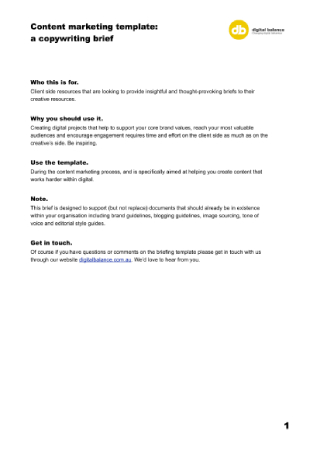
Copywriting Brief on Content Marketing
Get readers to take a specific action with good copywriting for your strategy.
-
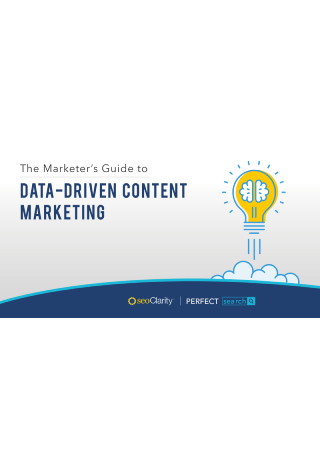
Data-Driven Content Marketing
Use customer profile information to create a successful content marketing campaign.
-

Definitive Guide to Engaging Content Marketing
Design engaging content for your website and social media pages using this guide.
-

Epic Content Marketing
Review the principles of epic content marketing through this sample.
-

Inbound & Content Marketing Made Easy
Apply inbound and content marketing effectively using this sample.
-
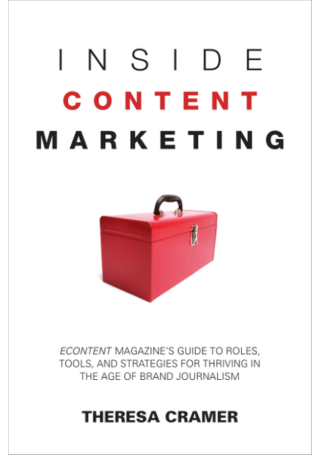
Inside Content Marketing
Dive inside the world of content marketing by referring to this sample.
-
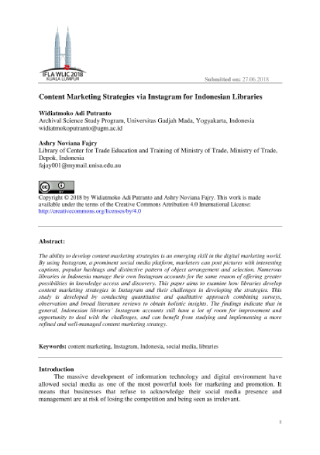
Instagram Content Marketing Strategies
Attract visitors to your Instagram page with the help of strategic content marketing.
-

Introduction to Content Marketing
Get a brief overview of content marketing with the use of this sample.
-

Killer Content Marketing Strategy
Develop a killer content marketing strategy by starting with the basics.
-

Lean Content Marketing
Acquire a knowledge of how lean content marketing may benefit your business.
-
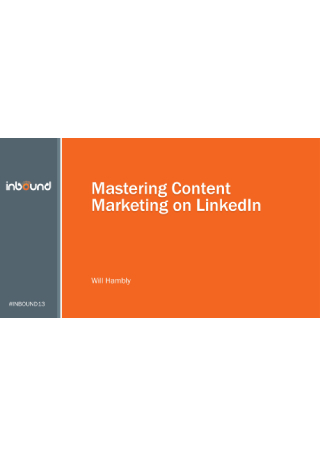
Mastering Content Marketing on LinkedIn
Save time and generate better results for your brand with a LinkedIn content strategy.
-

Measuring the ROI of Content Marketing
See how much revenue you gained from content marketing through this sample.
-
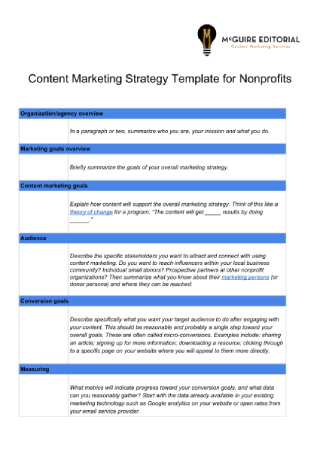
Nonprofit Content Marketing Strategy
Motivate donors of your nonprofit with good content using this sample.
-

One-Page Content Marketing Plan
Simplify marketing and intensify your focus with a one-page content marketing plan.
-
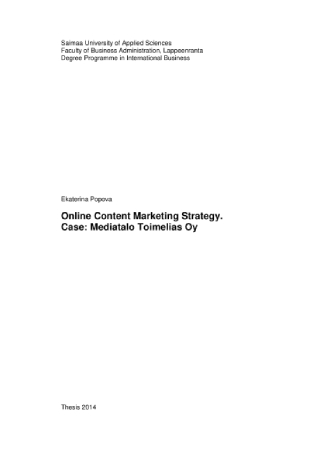
Online Content Marketing Strategy
Increase brand awareness online by establishing a good content marketing strategy.
-
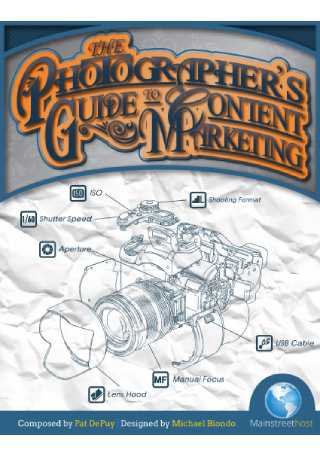
Photographer’s Guide to Content Marketing
Get started with content marketing using these guidelines for professional photographers.
-

Real Estate Content Marketing Guidebook
Post great real estate content for your business through this marketing guidebook.
-

Rethink Your Content Marketing
Uncover the reasons why you might want to rethink your content marketing with this sample.
-

Sophisticated Guide to Content Marketing
Learn everything you need to know about content marketing through this guide.
-

The Beginner’s Guide to Content Marketing
Know if content marketing is right for your business by reading this sample.
-
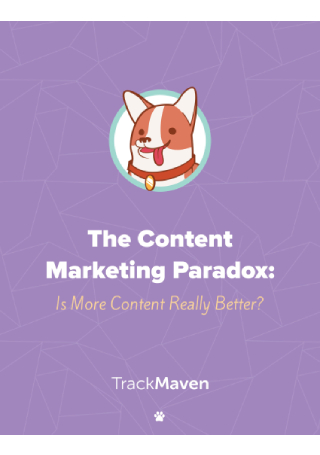
The Content Marketing Paradox
Get insights about the content marketing paradox using the sample provided.
-
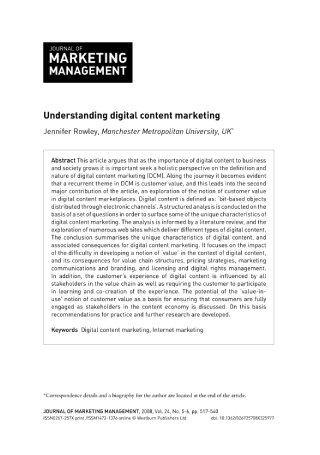
Understanding Digital Content Marketing
Obtain a holistic perspective on digital content marketing through the elements stated.
-
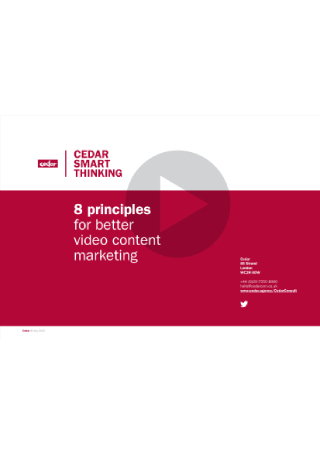
Video Content Marketing
See how you can improve your video content marketing strategy with these principles.
-
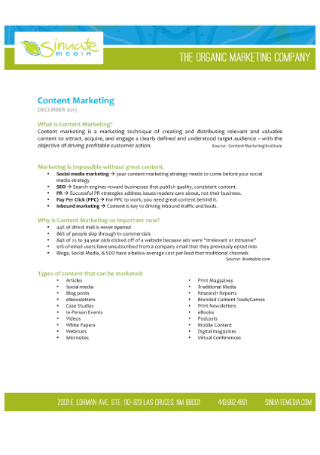
What Is Content Marketing
Understand the basic concept of content marketing by analyzing the given sample.
-

Content Marketing Plan Template
download now -
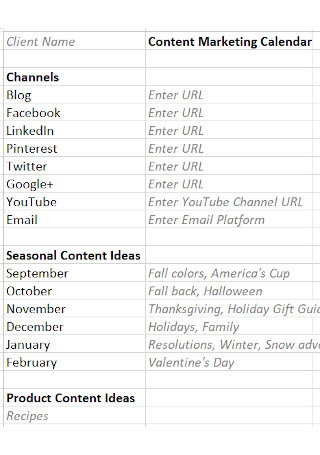
Content Marketing Calendar Template
download now
FREE Content Marketing s to Download
52+ Content Marketing Samples
What Is Content Marketing?
Four Major Purposes of Content Marketing
How to Create an Effective Content Marketing Plan
What Is Content Marketing?
It’s easy to see why people associate content marketing with blogs, videos, status updates, and tweets, especially when this form of marketing has become more apparent on the World Wide Web. But what many seem to forget is how content marketing is about storytelling, and as humans, stories have allowed us to connect with people in ways we never would have imagined.
In the simplest words, content marketing is defined as a strategic marketing approach centered on creating and distributing valuable content in order to attract and retain an audience. This enables the business to drive profitable customer response to increase sales and secure an established market. Many leading brands use content marketing to communicate with people from around the globe. It’s the present—and future—of marketing in this competitive business environment.
Here are five examples of content marketing that you’re likely familiar with.
Four Major Purposes of Content Marketing
Have you ever wondered whether your content really does appeal to your audience? After spending all your time and effort planning and implementing these programs, are they even keeping a close watch on your brand?
Driving customers to a path that leads them to purchase your product is not an easy journey. Content marketing offers many benefits to businesses that try to create content which aims to entertain, inspire, educate, and convince readers. To better understand these concepts, take a look at the points below.
Entertain
Not only can good content attract and entertain customers, but it can also evoke an emotional response that will urge them to take action. The key is to design an emotionally charged campaign that can tug on the heartstrings of its audience. Many government-funded agencies and nonprofit organizations bring awareness to their campaigns by depicting real-life scenarios that are worth sharing. It can be as happy or as sad as you want it to be, as long as it generates the desired reaction from viewers. This creates a personal level of intimacy that will leave people pondering for some time.
Inspire
Inspiring content can be pretty tricky to make, especially when you want to connect with your audience on an emotional level. Celebrity endorsements, red carpet events, blockbuster ratings, customers reviews, and the like all aim to lead your audience to make a purchasing decision in your favor. Several platforms and technologies have even helped companies save thousands in content marketing costs by covering a wider scope of people on different media. This allows you to generate better impressions for each of your marketing campaigns.
Educate
Educational content is usually more rational than it is emotional. It provides information that may resolve the challenges that customers face in a way that they could easily grasp. Creativity plays a vital role in keeping your audience engaged in every bit of detail you deliver. For instance, content that aims to educate the general public about what an environmental foundation does can gain a better response rate through an animated video. The content of the video should highlight the cause that you are fighting for as it caters to viewers of all ages.
Convince
The primary goal of persuasive content is to turn prospects into actual customers. Facts and figures are presented to convince customers that what you’re saying is supported by credible data. Capturing the attention of your audience is probably the easiest step of the process, considering how there’s nothing simple about trying to dismiss someone’s doubts. In an attempt to address the rational interests of consumers, you can use infographics, video content, and case studies to demonstrate your points.
How to Create an Effective Content Marketing Plan
All too often, content marketers make the mistake of diving into a campaign without building a strong foundation for their strategies. This will only cause them to lose their focus and drift away from the path they were supposed to follow in order to obtain the desired outcome.
If you’re new to the game, these tips will help you make a winning plan for content marketing success.
The list of reasons to do content marketing for your business has no end. If you want to succeed in the industry you are in, you can only grow if you learn to invest in proper content marketing. It’s a thorough process that’s bound to produce favorable results in the years to come.
